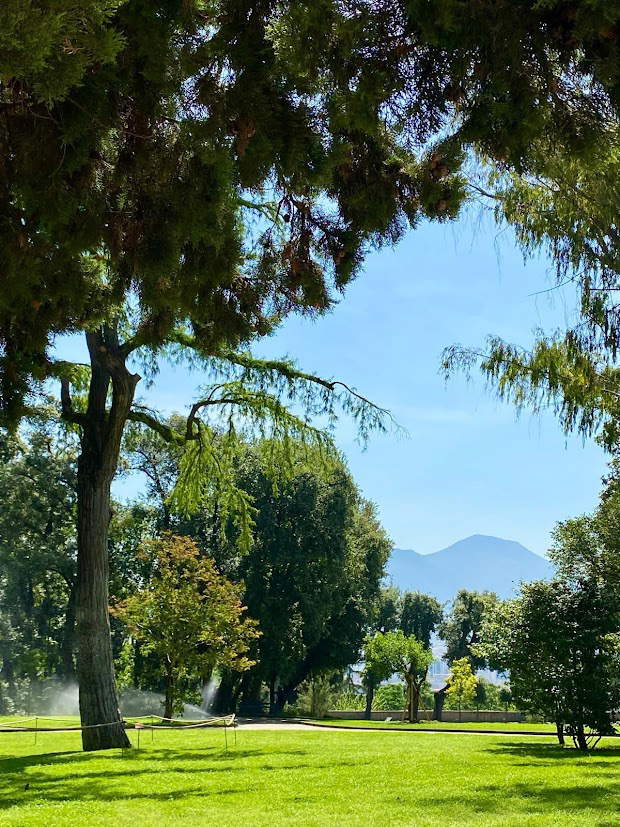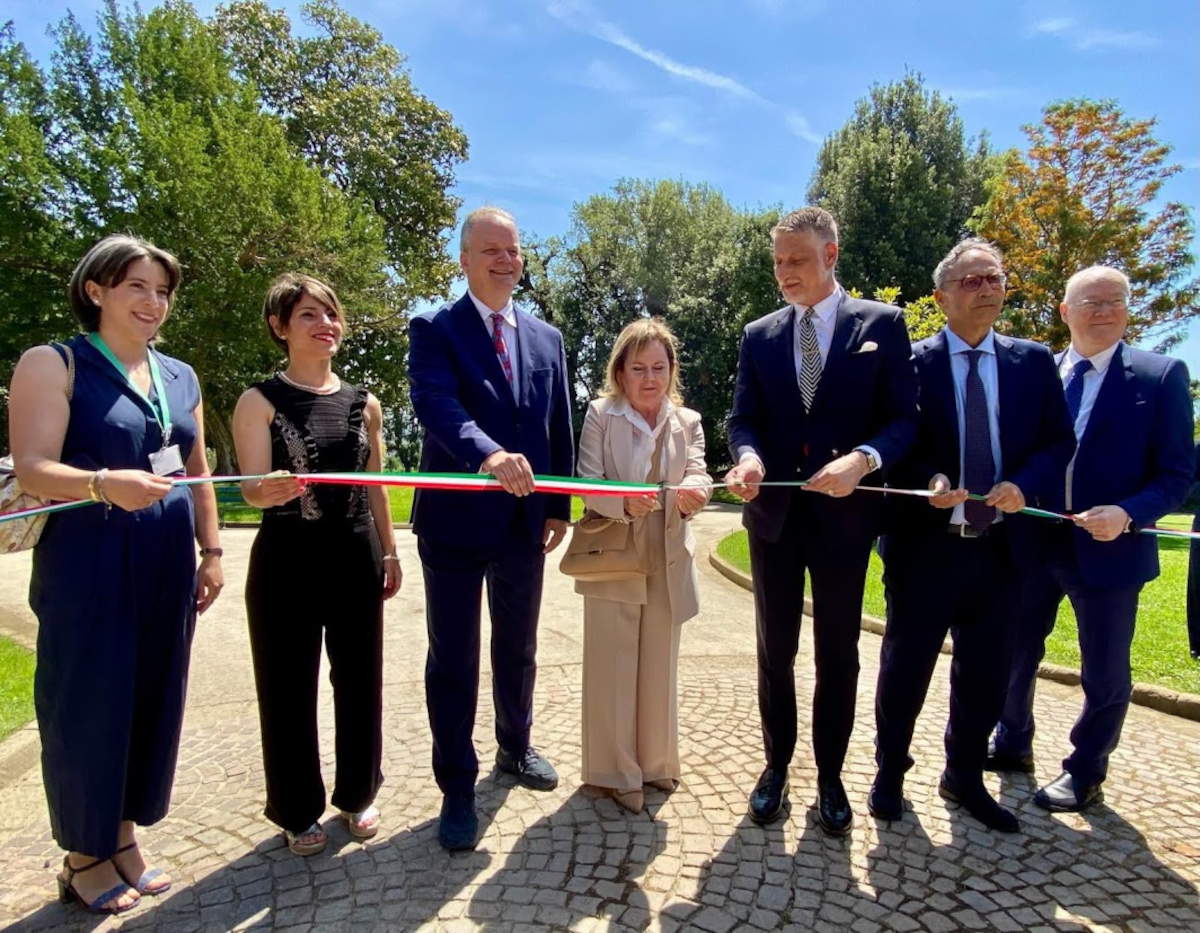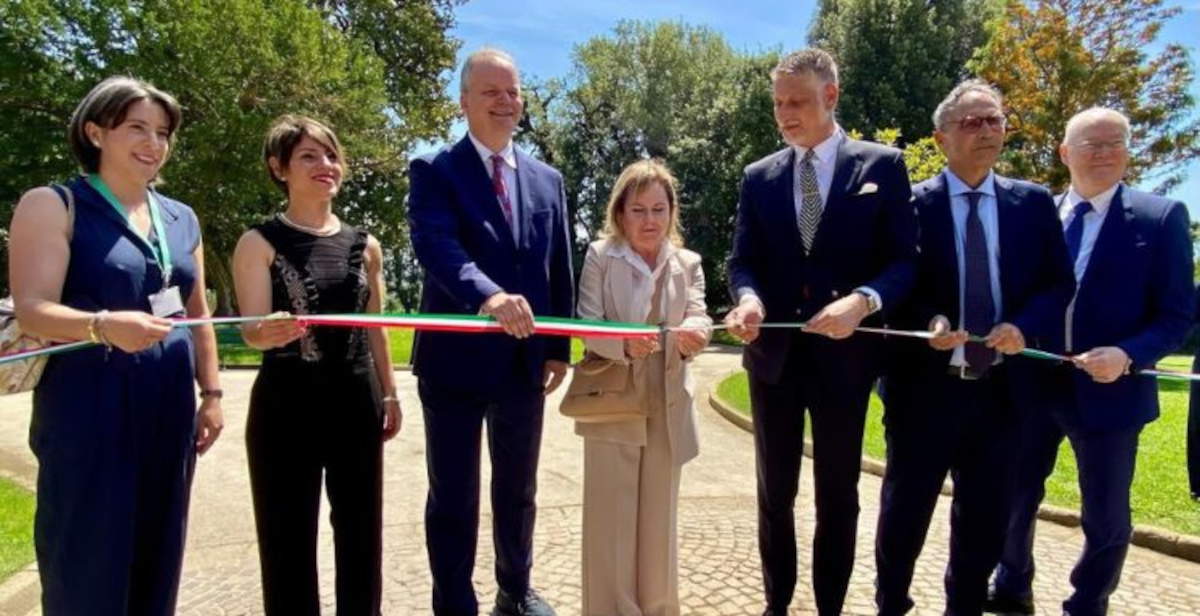June 4 marked the reopening to the public of the Princes’ Garden, one of the most significant and valuable areas of the Real Bosco di Capodimonte in Naples, spread over 134 hectares of historic parkland. The official opening took place in the presence of the Minister of Culture, Alessandro Giuli, who attended the ribbon-cutting ceremony accompanied by the Fanfare of the 10th Carabinieri Regiment Campania, conducted by Master Lieutenant Special Charge Luca Berardo.
“Today is a special day for Naples,” Giuli says. “A day of celebration because this wonderful landscape, these princely gardens, this forest so rich in biodiversity since its conception, is returned to the citizenry. It is a demonstration that the Ministry of Culture has been able to spend NRP funds well for the regeneration of the landscape and the most important museum sites such as Capodimonte, wonderfully directed by Eike Schmidt. It must be remembered that, since this government took office, the MiC has committed and mobilized hundreds of millions of euros exactly to achieve this result.”
The ceremony included the performance of the National Anthem and a musical selection, reflecting the symbolic value attached to the place. The event was also attended by leading figures in the field of cultural heritage protection and enhancement: the Director General and Referent of the Mission Unit for the PNRR, AngelantonioOrlando; the Head of the Department for the Protection of Cultural Heritage, Luigi La Rocca; and the Head of the Department for the Enhancement of Cultural Heritage, Alfonsina Russo. The technical aspects of the restoration were explained by the Director of Works, Eva Serpe, and the Single Project Manager, Renata Marmo. The Princes’ Garden, designed in 1840 by Friedrich Dehnhardt, head gardener of the Royal Botanical Garden of Naples, represents a work of landscape significance, conceived in the Anglo-Chinese style. The area was conceived from the beginning as a place for experimentation and acclimatization of plant species, housing 70 percent of the exotic species in the Real Bosco. Restoration has recovered architectural and naturalistic components, returning the area to its original function and beauty, with two hectares of groves, belvederes and winding avenues overlooking Vesuvius. Interventions carried out under the National Recovery and Resilience Plan (NRRP) included the planting of 10,047 trees, 7,616 shrubs and 43,243 herbaceous plants within the entire Historic Park, with the Princes’ Garden directly benefiting from 62 trees, 2,450 shrubs and 2,465 herbaceous plants. Thanks to these plantings, it was possible to initiate a program to restore the original architectural-vegetation design and recreate characteristic landscape views of the Real Bosco, paying attention to species selection to ensure a vigorous and sustainable physiognomic structure over time.



“The year-long work,” recalls Director of the Capodimonte Museum and Real Bosco Eike Schmidt, “is part of the 25-million-euro PNRR funding for the largest ever project to restore the avenues and plant architecture for Capodimonte, which is continuing on schedule. These are funds that were allocated directly by the Ministry of Culture to the Capodimonte Museum and Real Bosco and four other sites, for the enhancement of the identity of historic parks and gardens.”
Specimens in the Garden include a majestic Camphor, a Taxodium mucronatum and an Eucalyptus camaldulensis, along with magnolias, yews, cypresses, pines, a Cedar of Lebanon and a Melaleuca. The nineteenth-century historic trail has been cleared of the invasive vegetation that had altered its legibility over time, returning visitors to an environment of high biodiversity and museum value. Access to the Real Bosco and the Giardino dei Principi remains free, promoting public enjoyment of a natural heritage of historical significance. Environmental sustainability is a central element of the intervention, in line with the European objectives promoted by the PNRR, especially with regard to the efficient management of water resources. The avenues were made with a modern version of tuff wrought, a highly permeable material that facilitates the natural absorption of rainwater. The project also included the recovery of the original Bourbon drainage system by restoring 319 drainage ditches, a practice that contributes to the control of water runoff and the preservation of the structures. The lawn area was sown with selected seed mixtures with low water requirements, reducing the need for continuous irrigation, and thus promoting the overall sustainability of green management. Within the Garden, a belvedere, now called the “Princes’ Belvedere,” has been reclaimed, providing a particularly valuable vantage point. Simultaneously with the reopening, the “Capodimonte Ecological Community” active citizenship network was established with the aim of involving frequent visitors in the protection and enhancement of the Forest and in promoting awareness of the environmental objectives of the PNRR.
From a technical point of view, most of the new plantings involve native species such as holm oaks, lindens, downy oaks, maples, farnias and hornbeams. These interventions aim to stabilize the undergrowth and counteract the emergence of weed species, necessitating a combination of unwanted plant removal and replanting. The work is part of a long-term regeneration strategy, which envisions an evolution of the plant structure over the next half century, thus ensuring the preservation and vitality of the Real Bosco’s tree stock. Particularly relevant is the restoration of the Bourbon surface drainage system, which is based on the insertion of chestnut poles along the perimeter of the pits, accompanied by a ballast of stones at the base. The effectiveness of this methodology was verified during exceptional weather events, when the pits maintained drainage functionality without structural failure.
 |
| Naples, Princes' Garden at Capodimonte reopens: restoration restores a botanical monument |
Warning: the translation into English of the original Italian article was created using automatic tools. We undertake to review all articles, but we do not guarantee the total absence of inaccuracies in the translation due to the program. You can find the original by clicking on the ITA button. If you find any mistake,please contact us.